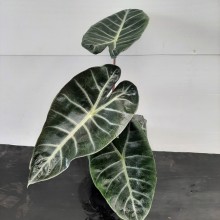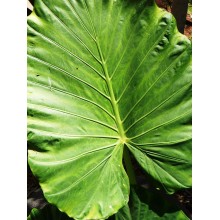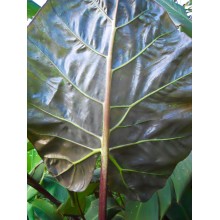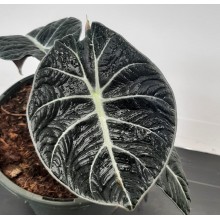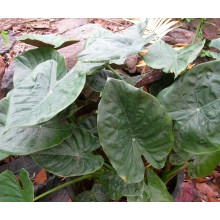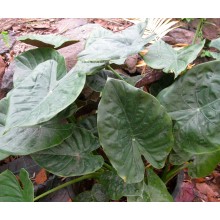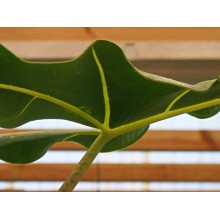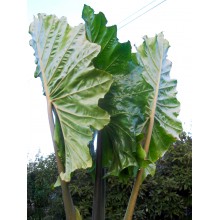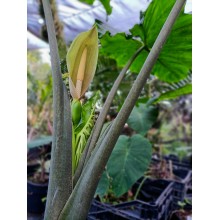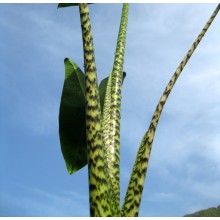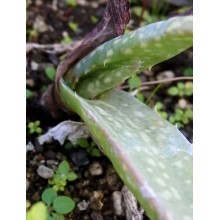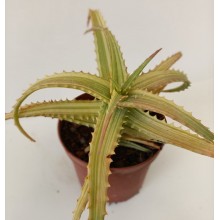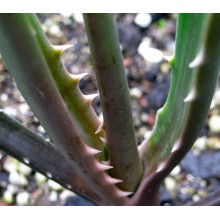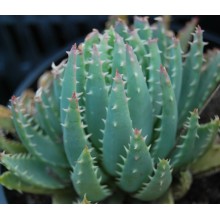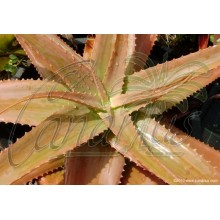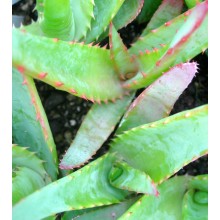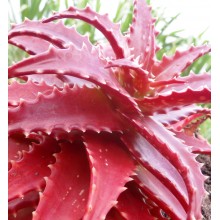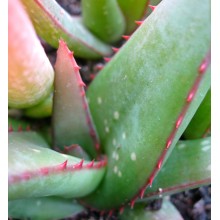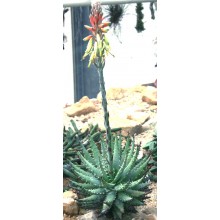General Plants There are 1881 products.

If you like exotic plants, you just came to the right place. Canarius offers the hard-to-find exotic plants which are seldom available in garden centres. Our shop has natural species as well as rare hybrids. We offer exotic plants from the Canary Islands.
Orders are sent to anywhere in Europe and also worldwide. Parcels will reach your home in a few days after shipping (but we also need some days for processing). Feel free to contact us if you have any questions.
Subcategories
-
Succulents
World deserts and dry areas are home to the most interesting plants. Canarius offers an increasing selection of succulent plants of maximum quality, because they are grown outdoors, under the full sun of the Canary Islands.
Succulents or "fat plants" are water-retaining species, adapted to dry conditions. They store succum (juice, water) in their leaves, stems or roots, and often show a stout and fleshy appearance.
-
Exotics
Exotic plants are species from other parts of the world, and they usually have ornamental qualities: a lush foliage, colorful flowers, unusual shapes... Here you can find a great variety of exotic plants: from Bromeliads and Heliconias, to pamls and houseplants.
Exotic plants do not have a particular use. Collectors buy this kind of plants for their rarity, for indoor or outdoor decoration, depending on their features.
-
Fruit, Herbs & Medicinals
Fruit, Herbs & Medicinal plants are focused on getting a better health. In this section, each type of plant produce healthy effects, both fruit trees (Feijoa, Pineapple, Fina de Jete...) and plants for health, such as Graviola, Aloe vera, Callisia fragrans...
In the normal metabolism of all living beings, the organism produces some substances from nutrients latent in the environment; some of these chemicals are part of the process in all (or almost) sort of species. Normally, the useful compounds are concentrated in some of its parts: leaves, seeds, flowers...
Find out your advisable plant and buy it online!
-
Special
On canarius.com we try to remove limits in the field of botany. On our online store we try to facilitate the purchase/sale of plants to anywhere in the world. That's why, we grow from the most common species to the most special plants, as we can see in this section.
-
Alocasia longiloba 'Pink Dragon'
Alocasia longiloba 'Pink Dragon'
Exceedingly beautiful tropical small Alocasia , with glossy deep green leaves, with prominent silvery veins and pink petioles. Its growth habit is similar to the more widely grown Alocasia x 'Polly'.
16,40 € -
Alocasia macrorrhizos - Elephant Ear Taro
Alocasia macrorrhizos - Elephant Ear Taro
This plant produces huge leaves that can attain 1,5 in a short time. It is a must for tropical-looking gardens but it can take quite a few degrees of frost. It grows well in the coastal mediterranean, with wind protection and abundat water. The stem has some itchy sap but it is edible if cooked for a long time.
23,40 € -
Alocasia plumbea Nigra
Alocasia plumbea Nigra
A classic of all times, this Alocasia has glossy and metallic dark leaves. They show unreal colours of purple to dark green or grey. It does not need hot temperatures to thrive.
26,70 € -
Alocasia reginula 'Black Velvet'
Alocasia reginula 'Black Velvet'
This is tiny gem with unreal foliage. Alocasia reginula is a very small Alocasia, most probably from Borneo, with black, light-reflecting foliage.
28,70 € -
Alocasia wentii
Alocasia wentii
"Hardy Elephant Ear" is a species of Alocasia that can take cold much better than others. It is native to high elevations in New Guinea. Leaf blades reach only 30-40 cm but they are purple-coppery beneath. It is fast growing, it does not require hot conditions and will sprout back after mild frost.
19,40 € -
Alocasia wentii Large
Alocasia wentii Large
"Hardy Elephant Ear" is a species of Alocasia that can take cold much better than others. It is native to high elevations in New Guinea. Leaf blades reach only 30-40 cm but they are purple-coppery beneath. It is fast growing, it does not require hot conditions and will sprout back after mild frost.
44,50 € -
Alocasia x 'Sarian'
Alocasia x 'Sarian'
This extremely beautiful hybrid was developed by crossing Alocasia zebrina and Alocasia micholitziana .
34,00 € -
Alocasia x Portora
Alocasia x Portora
Cold-hardy hybrid of unrivalled beauty. It is a man-made cross of Alocasia odora x Alocasia portei, developed in Florida. It bears magnificent huge leaves, and will survive to frost, to about -10 C. Leaves can reach 1.5 m in length and trunks can grow up to 2 m tall, giving a palm-like appearance.
28,90 € -
Alocasia x Portora- Large 100 cm
Alocasia x Portora- Large 100 cm
Cold-hardy hybrid of unrivalled beauty. It is a man-made cross of Alocasia odora x Alocasia portei, developed in Florida. It bears magnificent huge leaves, and will survive to frost, to about -10 C. Leaves can reach 1.5 m in length and trunks can grow up to 2 m tall, giving a palm-like appearance.We offer a plant with a height of 100 cm and a trunk...
68,90 € -
Alocasia zebrina
Alocasia zebrina
Very beautiful species that can also be used as a potted indoor plant, Alocasia zebrina is endemic to the island of Luzon, in the Philippines archipelago. Leaves are glossy, arrow-shaped, with upright zebra-striped petioles. An astonishing pattern!
36,00 € -
Aloe abyssicola
Aloe abyssicola
We offer a 8-14 cm rooted plant. This is a distinctive mid-sized aloe that grows on cliffs, in Yemen. Rosettes grow asymmetrically on a side, with beautiful, wide dull mottled leaves with widely spaced spines.
29,40 € -
Aloe arborescens 'Variegata'
Aloe arborescens 'Variegata'
This variegated clone of Aloe arborescens is just as easy to grow and to make it bloom as the true species, which is a popular ornamental shrub from South Africa. It just grows a bit slower and smaller. Leaves are jade-green, with yellow stripes.
34,00 € -
Aloe barberae - Large
Aloe barberae - Large
The largest of all aloes. This South African aloe tree grows as huge as a Dracaena draco and can attain 6-16 m in height. It takes light frosts and it is a must for Mediterranean gardens.
148,00 € -
Aloe brevifolia
Aloe brevifolia
Smaller leaved form of a low growing, clumping aloe. This dwarf form has a very manageable size and it is great for pots. This species from South Africa can stand some frost.
13,80 € -
Aloe bulbilifera var. paulianae
Aloe bulbilifera var. paulianae
Aloe bulbilifera is different because it is viviparous: new pups sprout from the inflorescence and grow larger when the red flowers are gone. This is the variety called paulianae. It has an elegant rosette turning copper-pinkish in full sun.
15,20 € -
Aloe bulbilifera var. paulianae - Large
Aloe bulbilifera var. paulianae - Large
Rosette 30 - 50 cm diam. Aloe bulbilifera is different because it is viviparous: pups sprout from the inflorescence and grow larger when the red flowers are gone. This is the variety called paulianae.
22,70 € -
Aloe comosa
Aloe comosa
We offer a 13-18 cm diameter plant. This large stemmed aloe grows to a height of 1-3 m, unbranched. The bold rosette has a rusty-copper colour. It blooms with tall multiple spikes of red and yellow flowers. It is native to a small area close to Clanwilliams, e Western Cape.
15,20 € -
Aloe dorotheae - Large
Aloe dorotheae - Large
This is one of the most colourful low-growing aloes, a delightful garden plant with glossy cherry-red leaves when exposed to full sun. It is becoming increasingly popular in Tenerife, while it is critically endangered in the wild.
38,80 € -
Aloe elegans Ethiopia
Aloe elegans Ethiopia
Mid-sized stemless Aloe, widespread and locally abundant in northern Ethiopia and in Eritrea. It grows solitary or forming small groups. It grows on rocky slopes, mostly on sandstone or limestone, in areas with evergreen bushland or wooded grassland. This batch is from Ethiopian populations.
16,50 € -
Aloe erinacea
Aloe erinacea
Collector's aloe from harsh dry mountains in Namibia. It is a small gem with green-gray leaves full of white spines often tipped in red. It does not like to be overwatered!
12,50 €
At the moment there are few products in this category General Plants




















